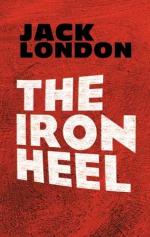* The name only, and not the idea, was imported from Russia. The Black Hundreds were a development out of the secret agents of the capitalists, and their use arose in the labor struggles of the nineteenth century. There is no discussion of this. No less an authority of the times than Carroll D. Wright, United States Commissioner of Labor, is responsible for the statement. From his book, entitled “The Battles of Labor,” is quoted the declaration that “in some of the great historic strikes the employers themselves have instigated acts of violence;” that manufacturers have deliberately provoked strikes in order to get rid of surplus stock; and that freight cars have been burned by employers’ agents during railroad strikes in order to increase disorder. It was out of these secret agents of the employers that the Black Hundreds arose; and it was they, in turn, that later became that terrible weapon of the Oligarchy, the agents- provocateurs.
Never had labor received such an all-around beating. The great captains of industry, the oligarchs, had for the first time thrown their full weight into the breach the struggling employers’ associations had made. These associations were practically middle-class affairs, and now, compelled by hard times and crashing markets, and aided by the great captains of industry, they gave organized labor an awful and decisive defeat. It was an all-powerful alliance, but it was an alliance of the lion and the lamb, as the middle class was soon to learn.
Labor was bloody and sullen, but crushed. Yet its defeat did not put an end to the hard times. The banks, themselves constituting one of the most important forces of the Oligarchy, continued to call in credits. The Wall Street* group turned the stock market into a maelstrom where the values of all the land crumbled away almost to nothingness. And out of all the rack and ruin rose the form of the nascent Oligarchy, imperturbable, indifferent, and sure. Its serenity and certitude was terrifying. Not only did it use its own vast power, but it used all the power of the United States Treasury to carry out its plans.




